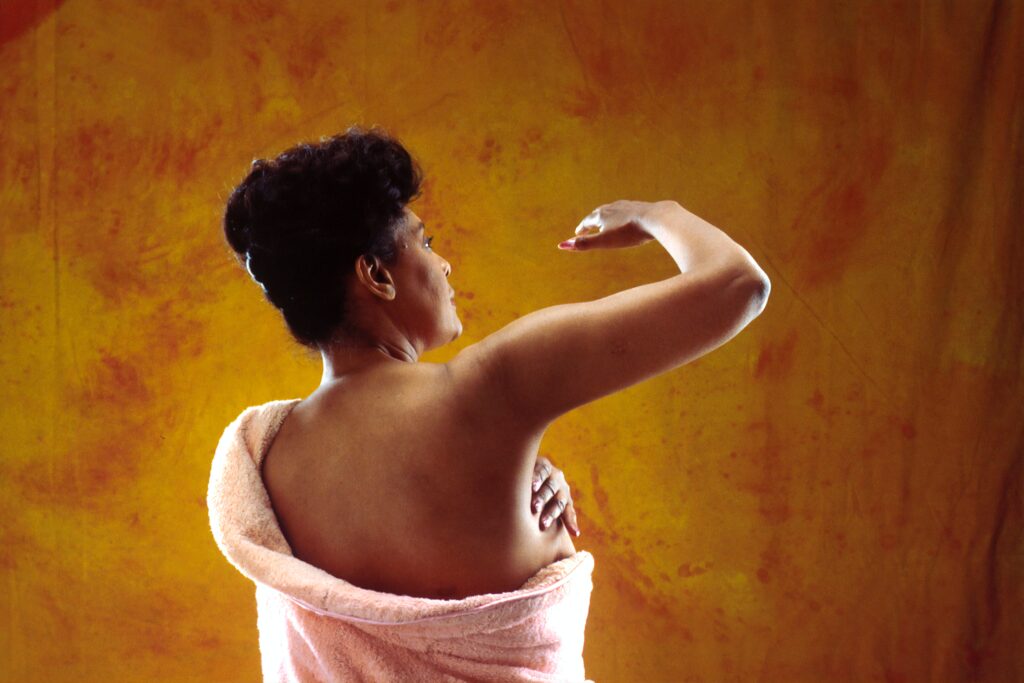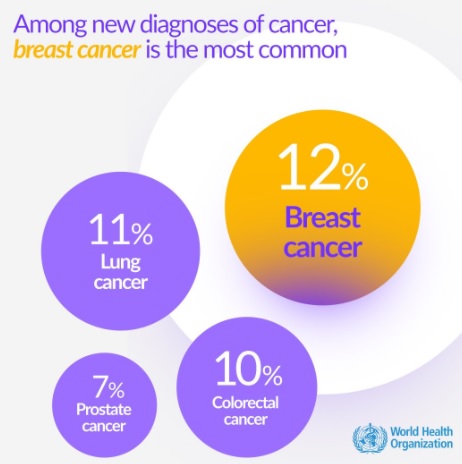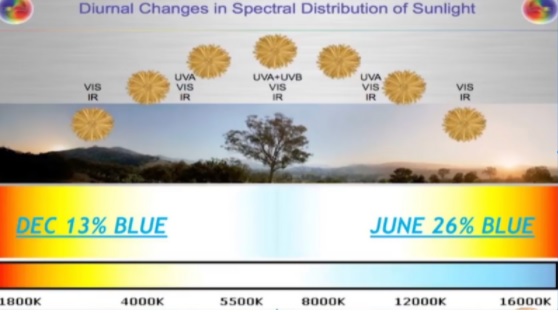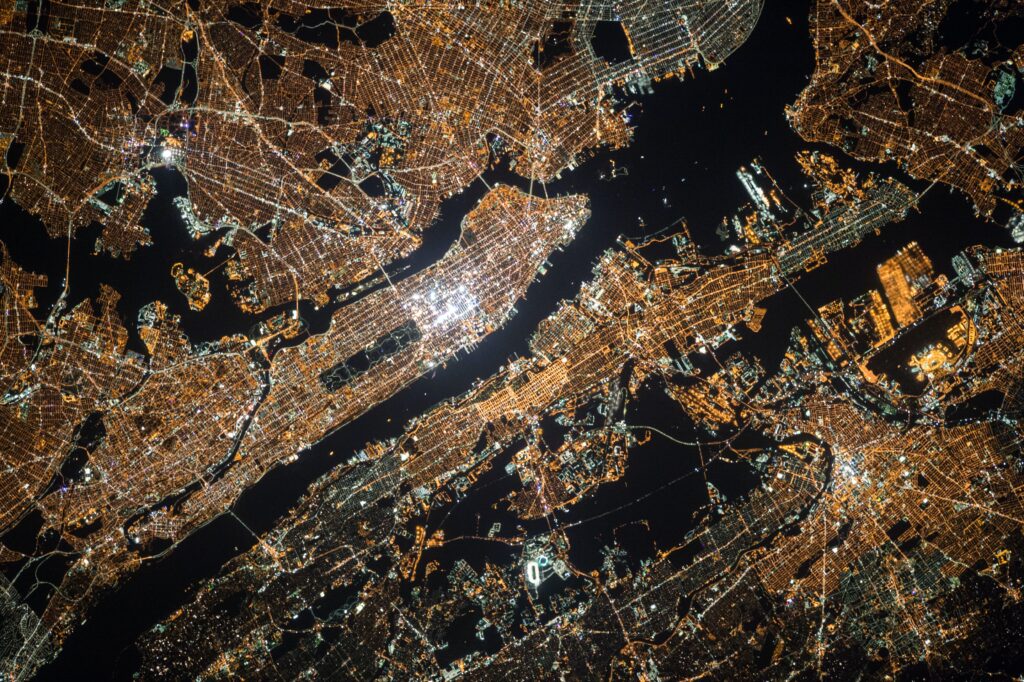

The information in this article is not intended as medical advice, and should not be construed as such. Always consult with a suitably qualified medical practitioner.
What has light got to do with breast cancer?
–Light is a type of electromagnetic radiation.
–Zeitgeber: The word zeitgeber derives from a combination of two German terms, Zeit, which means “time,” and Geber, which means “giver”-so a zeitgeber is literally a “time giver.”
-Light is the strongest synchronizing agent (zeitgeber) for the circadian system. (1)
-Light at Night is a risk factor for breast cancer.
-Never place a phone near the heart, as the heart has the second highest density of mitochondria. In other words, do not carry a cell phone in your shirt or trouser pocket, unless completely switched off. This applies to men and women. Women should avoid carrying a phone in a bra.
Practical, cost effective solutions for prevention and assistance in the treatment of breast cancer:
-Deuterium has an interesting relationship with ultraviolet (UV) photons and repels light absorption in the red and Near-Infrared Range (NIR). It is important for growth, but when in abundance or incorrect location can bring about mitochondrial dysfunction. (2)
-The Dutch Hacking Health Award: breast cancer assistance through TV Photonbiomodulation (3)
-Lowering deuterium concentrations through diet, water and biomodulation applications are demonstrated to be effectively helpful with cancer.
The sun is an excellent vaccine for breast cancer

A Systematic Review and Meta-Analysis (Troy et al., 2020) suggested that obtaining greater than an hour a day in the sun during the summer months could decrease the risk of developing breast cancer. (4)
Note: Patients receiving chemotherapy and drugs should be careful with sun exposure due to induced photonsensitivity.
Be Proactive:
Strive for bright days (sunlight exposure) and dark nights. (1)
In addition it is advised not to wear sunglasses when outdoors.
Morning sunrise and sunset light are greatly encouraged and endorsed. These are pure IR.

At night especially, avoid white light and blue light exposure from screens. Implement the WHO Dutch Hacking Health solution for screen and light spectrum changes that are required. (2,3)
After sunset use red light bulbs and candles. This is a compromise, as any light at night will disrupt the circadian rhythm, however, red light and candles do so to a lesser degree.
At night when you sleep, your bedroom must be as dark as possible. Blackout curtains will help in this regard.
The environment is implicated in driving breast cancer risk:
Only about 5 to 10 percent of breast cancers are linked to gene mutations passed through generations of a family. Some people who have no risk factors develop cancer, yet other people with risk factors never do. This further implicates the environment in driving the breast cancer risk.
Disruption of circadian rhythms by Light at Night (LAN) – Breast cancer and the importance of your light environment:
A major consequence of our modern lifestyle is disruption of circadian rhythms. Circadian rhythms are essential to the regulation of many physiological and behavioral functions in mammals. Their disruption has been linked to development of many health problems, including breast cancer. A properly functioning circadian system plays an important role in preventing cancer formation and suppressing tumor growth based on the several lines of evidence. (4-20)
Circadian Disruption:

Circadian disruption results in not only an increased cancer risk but also in cancer progression and a poorer survival outcome.
The influence of altered circadian rhythm on breast cancer was first noted in the 1960s.
Women who work irregular shift patterns, such as nurses, have a higher frequency of hormone-related breast cancer, and the higher levels of cancer may be greater for women who started night shifts before a first pregnancy. Elevated breast cancer risk also occurs in women exposed to high levels of ambient light at night.
-In addition to epidemiological studies, there is a growing body of experimental evidence linking circadian disruption to increased breast cancer risk and poorer survival outcome.
-Circadian disruptions negatively influence both tumor molecular clocks and host circadian systems to increase cancer risk and progression. (14-18)
Outdoor Light At Night is a cause of light pollution – Including our home security and street lights:

Women living in areas with high levels of outdoor Light at Night (LAN) may be at higher risk of breast cancer even after accounting for individual and area-level risk factors for breast cancer. (5, 8, 11, )
International agencies – Circadian disruption:
- The International Agency for Research on Cancer (IARC) classification of shift work and Radiofrequency Radiation (RFR):
-Shift work involving circadian disruption is classified by IARC as “probably carcinogenic to humans” (Group 2A), based on limited evidence of cancer in humans, sufficient evidence of cancer in experimental animals, and strong mechanistic evidence in experimental animals. (20)
-In May 2011 the International Agency for Research on Cancer (IARC) evaluated cancer risks from RFR. Human epidemiological studies gave evidence of increased risk for glioma and acoustic neuroma. RFR was classified as Group 2B, a possible human carcinogen. (21).
- The National Toxicology Program (NTP) :
(1) persistent night shift work can cause breast cancer in women and
(2) certain lighting conditions may be linked to cancer. (22)
- ANSES:
In 2019 the French Agency for Food, Environmental and Occupational Health & Safety (ANSES) confirmed the toxicity of blue light on the retina and highlighted the effects of disturbance of biological rhythms and sleep. (23)
What are the warning signs of breast cancer?
- A lump or thickening in or near the breast or in the underarm that persists through the menstrual cycle.
- A mass or lump, which may feel as small as a pea.
- A change in the size, shape, or contour of the breast.
- A blood-stained or clear fluid discharge from the nipple.
- A change in the look or feel of the skin on the breast or nipple (dimpled, puckered, scaly, or inflamed).
- Redness of the skin on the breast or nipple.
- An area that is distinctly different from any other area on either breast.
- A marble-like hardened area under the skin (24)
In South Africa all hospitals and clinics are required to make use of photonbiomodulation (PBM) within their patient care and treatment options. The degree of PBM intensity is variable. Solutions are available to be cost-effective and efficient. South Africa does hold the resources for further R&D, and script regulatory requirements.(2)
Breast cancer advocacy groups, cancer treatment and palliative care centers should take note of the importance of the light environment. Not just for the sake of their patients, but also their staff.
References:
- The Nobel Prize in Physiology or Medicine 2017 https://www.nobelprize.org/prizes/medicine/2017/advanced-information/WHO
- WHO EMF Project Report South Africa 2021 https://www.emfsa.co.za/wpcontent/uploads/2021/06/World_Health_Organization_International.pdf
- The Dutch Hacking Health Award – breast cancer assistance through TV Photonbiomodulation https://www.buymeacoffee.com/EMFSA/video-hacking-health-award-webinar-step-step
- Troy W. R. Hiller, Dylan E. O’Sullivan,Darren R. Brenner,Cheryl E. Peters, and Will D. King2020 Solar Ultraviolet Radiation and Breast Cancer Risk: A Systematic Review and Meta-Analysis Environmental Health Perspectives 128:1 CID: 016002 https://doi.org/10.1289/EHP4861
- James P, Bertrand KA, Hart JE, Schernhammer ES, Tamimi RM, Laden F. Outdoor Light at Night and Breast Cancer Incidence in the Nurses’ Health Study II. Environ Health Perspect. 2017;125(8):087010. Published 2017 Aug 17. doi:10.1289/EHP935 https://ehp.niehs.nih.gov/doi/full/10.1289/EHP935
- Bracci, M.; Ciarapica, V.; Eléxpuru Zabaleta, M.; Tartaglione, M.F.; Pirozzi, S.; Giuliani, L.; Piva, F.; Valentino, M.; Ledda, C.; Rapisarda, V.; Stevens, R.G.; Santarelli, L. BRCA1 and BRCA2 Gene Expression: Diurnal Variability and Influence of Shift Work. Cancers 2019, 11, 1146. https://doi.org/10.3390/cancers1108114
- Mortazavi SAR, Mortazavi SMJ. Women with hereditary breast cancer predispositions should avoid using their smartphones, tablets, and laptops at night. Iran J Basic Med Sci. 2018 Feb;21(2):112-115. doi: 10.22038/IJBMS.2018.27711.6751. PMID: 29456806; PMCID: PMC5811748. https://pubmed.ncbi.nlm.nih.gov/29456806/
- Guanglei, W.; Ngarambe, J.; Kim, G. A Comparative Study on Current Outdoor Lighting Policies in China and Korea: A Step toward a Sustainable Nighttime Environment. Sustainability 2019, 11, 3989. https://doi.org/10.3390/su11143989
- Munch M, Bromundt V. Light and chronobiology: implications for health and disease. Dialogues ClinNeurosci.2012;14(4):448-453.doi:10.31887/DCNS.2012.14.4/ https://www.ncbi.nlm.nih.gov/pmc/articles/PMC3553574/
- Blume C, Garbazza C, Spitschan M. Effects of light on human circadian rhythms, sleep and mood. Somnologie (Berl). 2019;23(3):147-156. doi:10.1007/s11818-019-00215-x https://www.ncbi.nlm.nih.gov/pmc/articles/PMC6751071/
- Zubidat, Abed E. and Haim, Abraham. “Artificial light-at-night – a novel lifestyle risk factor for metabolic disorder and cancer morbidity” Journal of Basic and Clinical Physiology and Pharmacology, vol. 28, no. 4, 2017, pp. 295-313. https://doi.org/10.1515/jbcpp-2016-0116
- Al-Naggar RA, Anil Sh. Artificial Light at Night and Cancer: Global Study. Asian Pac J Cancer Prev. 2016;17(10):4661-4664. Published 2016 Oct 1. doi:10.22034/apjcp.2016.17.10.4661 http://journal.waocp.org/article_40505.html
- Lin H-H and Farkas ME (2018) Altered Circadian Rhythms and Breast Cancer: From the Human to the Molecular Level. Front. Endocrinol. 9:219. doi: 10.3389/fendo.2018.00219 https://www.frontiersin.org/articles/10.3389/fendo.2018.00219/full
- Blakeman, V., Williams, J.L., Meng, QJ. et al. Circadian clocks and breast cancer. Breast Cancer Res 18, 89 (2016). https://doi.org/10.1186/s13058-016-0743-z
- Hadadi, E., Taylor, W., Li, XM. et al. Chronic circadian disruption modulates breast cancer stemness and immune microenvironment to drive metastasis in mice. Nat Commun 11, 3193 (2020). https://www.nature.com/articles/s41467-020-16890-6
- Blask DE, Dauchy RT, Dauchy EM, Mao L, Hill SM, Greene MW, et al. (2014) Light Exposure at Night Disrupts Host/Cancer Circadian Regulatory Dynamics: Impact on the Warburg Effect, Lipid Signaling and Tumor Growth Prevention. PLoS ONE 9(8): e102776. https://doi.org/10.1371/journal.pone.0102776
- Lee, Y. Roles of circadian clocks in cancer pathogenesis and treatment. Exp Mol Med (2021). https://doi.org/10.1038/s12276-021-00681-0
- Zhang, Z., Zeng, P., Gao, W. et al. Circadian clock: a regulator of the immunity in cancer. Cell Commun Signal 19, 37 (2021). https://doi.org/10.1186/s12964-021-00721-2
- Savvidis, C., Koutsilieris, M. Circadian Rhythm Disruption in Cancer Biology. Mol Med 18, 1249–1260 (2012). https://doi.org/10.2119/molmed.2012.00077
- Carcinogenicity of night shift work https://www.etui.org/sites/default/files/ez_import/lancet.pdf
- World Health Organization/International Agency for Research on Cancer. “Cell phones and cancer: Assessment classifies radiofrequency electromagnetic fields as possibly carcinogenic to humans.” ScienceDaily. ScienceDaily, 31 May 2011. https://www.sciencedaily.com/releases/2011/05/110531133115.htm
- NTP Review of Shift Work at Night, Light at Night, and Circadian Disruption https://ntp.niehs.nih.gov/whatwestudy/assessments/cancer/completed/shiftwork/index.htm
- LED: ANSES recommendations to limit exposure to blue light https://www.emfsa.co.za/news/french-agency-anses-press-release-led-recommendations-to-limit-exposure-to-blue-light/
- Cleveland Clinic https://my.clevelandclinic.org/health/diseases/3986-breast-cancer
